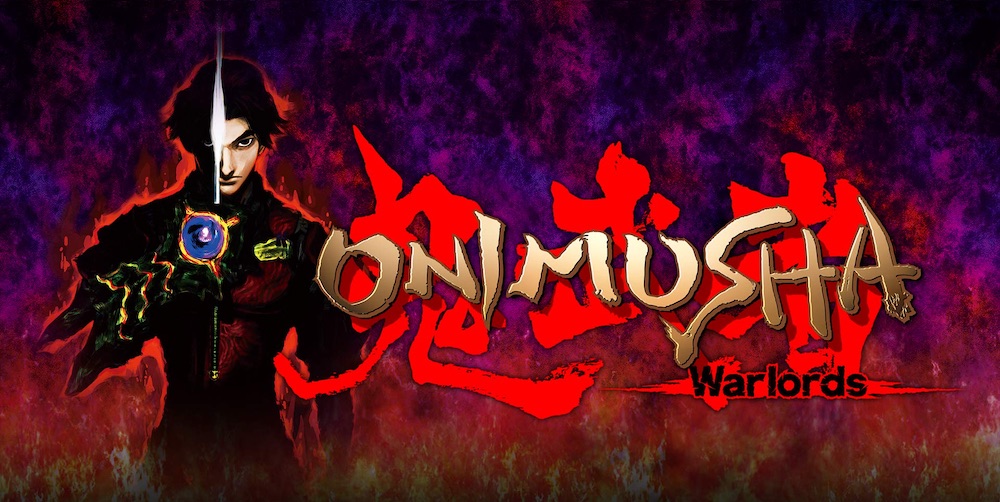
Given that it was almost twenty years ago, it’s easy to forget that there was a solid four year period during which Capcom absolutely dominated the Hack ’n’ Slash market. Between 2001 and 2005, the Japanese development house released four critically acclaimed Onimusha titles (not counting the turn-based Gameboy RPG), and three entries in the (still) ongoing Devil May Cry series. The stellar run was ended only by the genre-stomping release of God of War, which, interestingly, Capcom itself published in Japan. With that, Onimusha mostly faded into history.

Since Capcom flagship Resident Evil is on its way back into the limelight, it seems only fitting that Onimusha, which was initially intended to be a RE prequel set in feudal Japan, should be given another chance to shine. The series’ first title, Onimusha: Warlords, tells the story of a Sengoku era castle besieged by demons, and the lone samurai tasked with liberating it from the grasp of the demon king Fortinbras.
Onimusha: Warlords pits players against a varied army of demons, ranging from your run-of-the-mill “zombie” to scissor-handed ninjas and floating orbs of flesh. To aid in your assault, you’re gifted three elemental weapons: a thunderous katana, a fiery zweihänder, and a tempestuous double-naginata, each of which also acts as a key to unlock specific, elementally guarded doors.
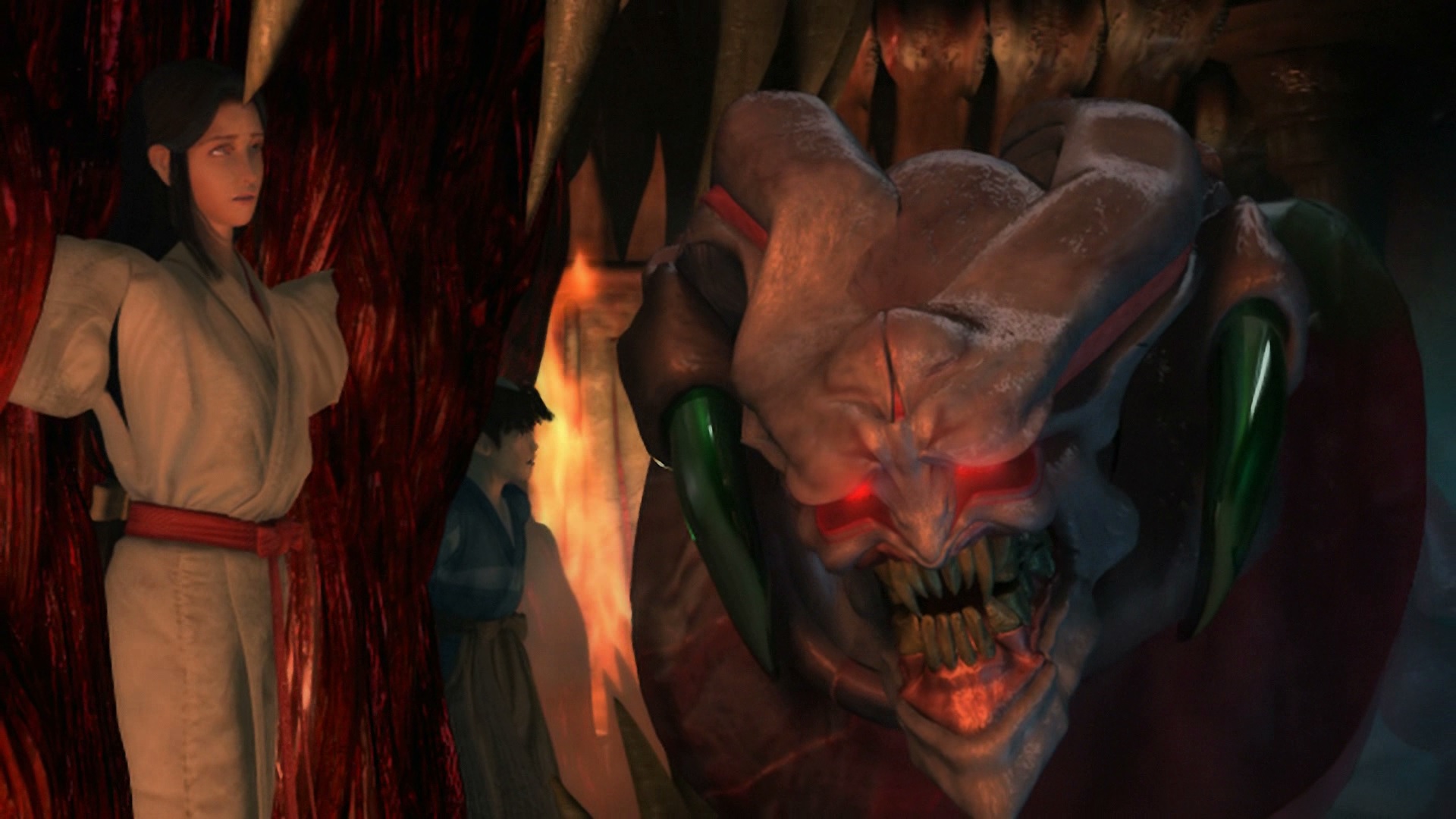
While basic, combat benefits from mostly tight and predictable controls that offer a surprising degree of fluidity in movement. Enemies will block and dodge your attacks and demand that you do the same in order to survive encounters that have you outnumbered six-to-one. One-hit-kill counterattacks are also possible, however trying to land these consistently brings light to the awkward timing between strikes and dodges, which don’t quite want to overlap or cancel each other. It’s a little jarring, particularly if you’re used to the ultra-responsive dodge/attack systems of modern titles like Bloodborne or God of War (2018).
After using one of your newfound toys to cut down an enemy, the slain foe will release “souls,” the game’s primary upgrade currency, which can be used to strengthen your weapons, empower their elemental keys, and upgrade consumables. This is a primitive iteration of the now-generic RPG-lite upgrade mechanics seen in many modern adventure games, but what it lacks in complexity it makes up for in fun and functionality. Upgraded weapons carry greater heft and deal significantly more damage, and their corresponding magic attacks are each enhanced in great measure.

Less engaging are the upgradeable elemental keys, which demand an equal number of souls to the weapons but serve only to allow continued passage through the game. These could have served brilliantly as an optional upgrade path, offering you the choice to unlock side areas and extra goodies at the cost of weapon upgrades. Instead, they become mandatory “soul-sinks” that arbitrarily gate your progress through the story.
While little has been done to enhance or beautify them beyond their original quality, Onimusha: Warlords’ distinctly PS2 era textures hold up surprisingly well when upscaled to modern resolutions. Characters and environments are crisp and detailed, and the game’s many particle and glow effects are striking. That these visuals still catch the eye almost 20 years later is a testament to the effort that went into their creation.
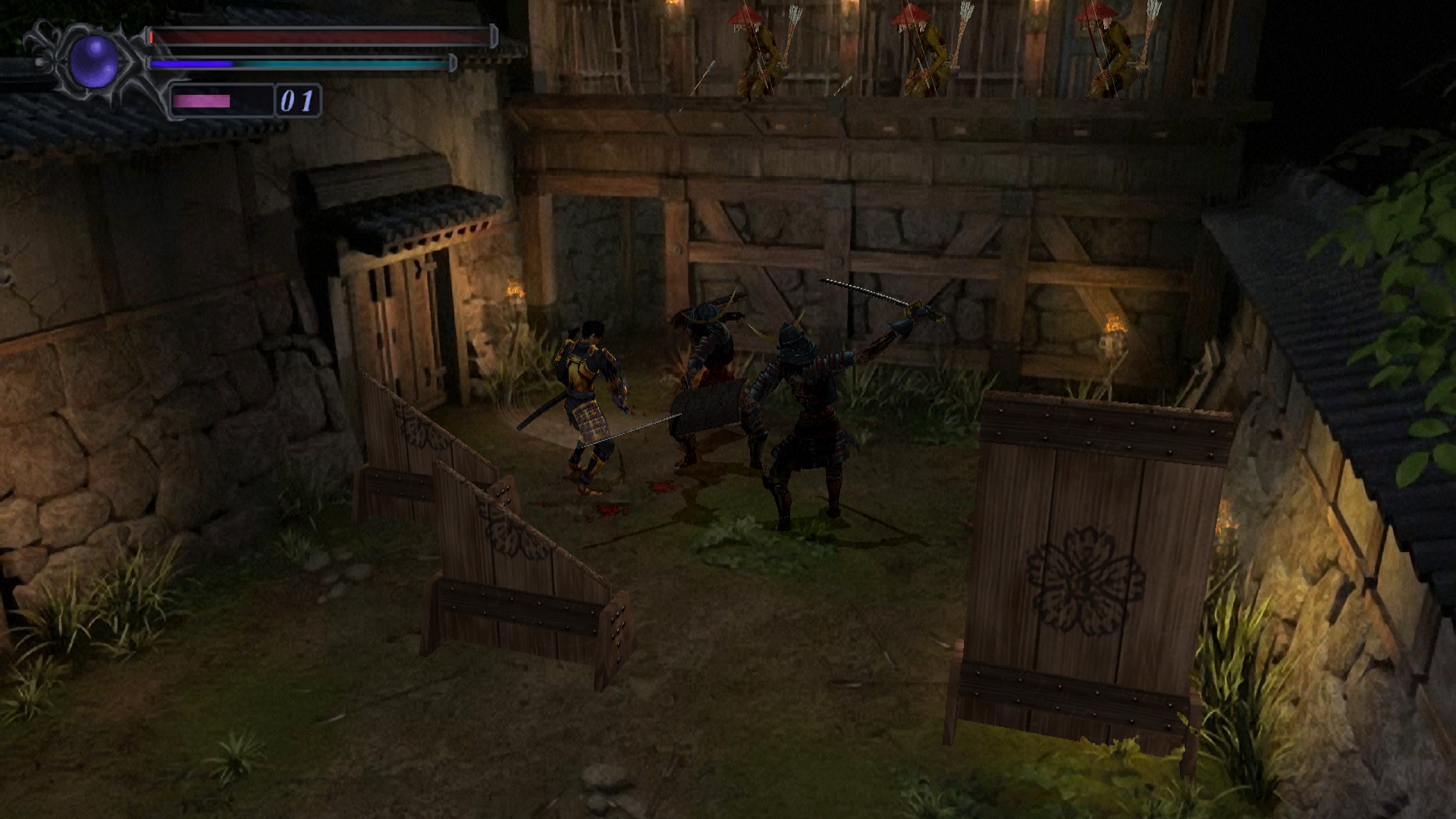
More impressive than the presentation is the art style behind it. The design of Onimusha: Warlords’ Inabayama Castle is subtle and steeped in reality, allowing the absurd and fantastic design of the characters, both human and demon, to catch the player’s attention. It is only in the rare moments of quiet that you have a chance to soak in the castle’s beauty and appreciate how much detail went into the mostly non-interactive scenery. All of this is turned on its head, of course, when entering any demonic structures, which cast wood and steel to the wind of favour of a brutal blend of bone, blood and rock.
Likely owing to staged and disrupted development, there is a huge disparity between the quality of textures and animations used across characters. The core cast are mostly blocky messes, while some generic enemies seem to have much higher levels of detail. Oddly, the Moth Man character, who has less than a minute of screen time, has the best facial animation and poly-count by a significant margin. This doesn’t harm the experience, but it’s an interesting quirk.
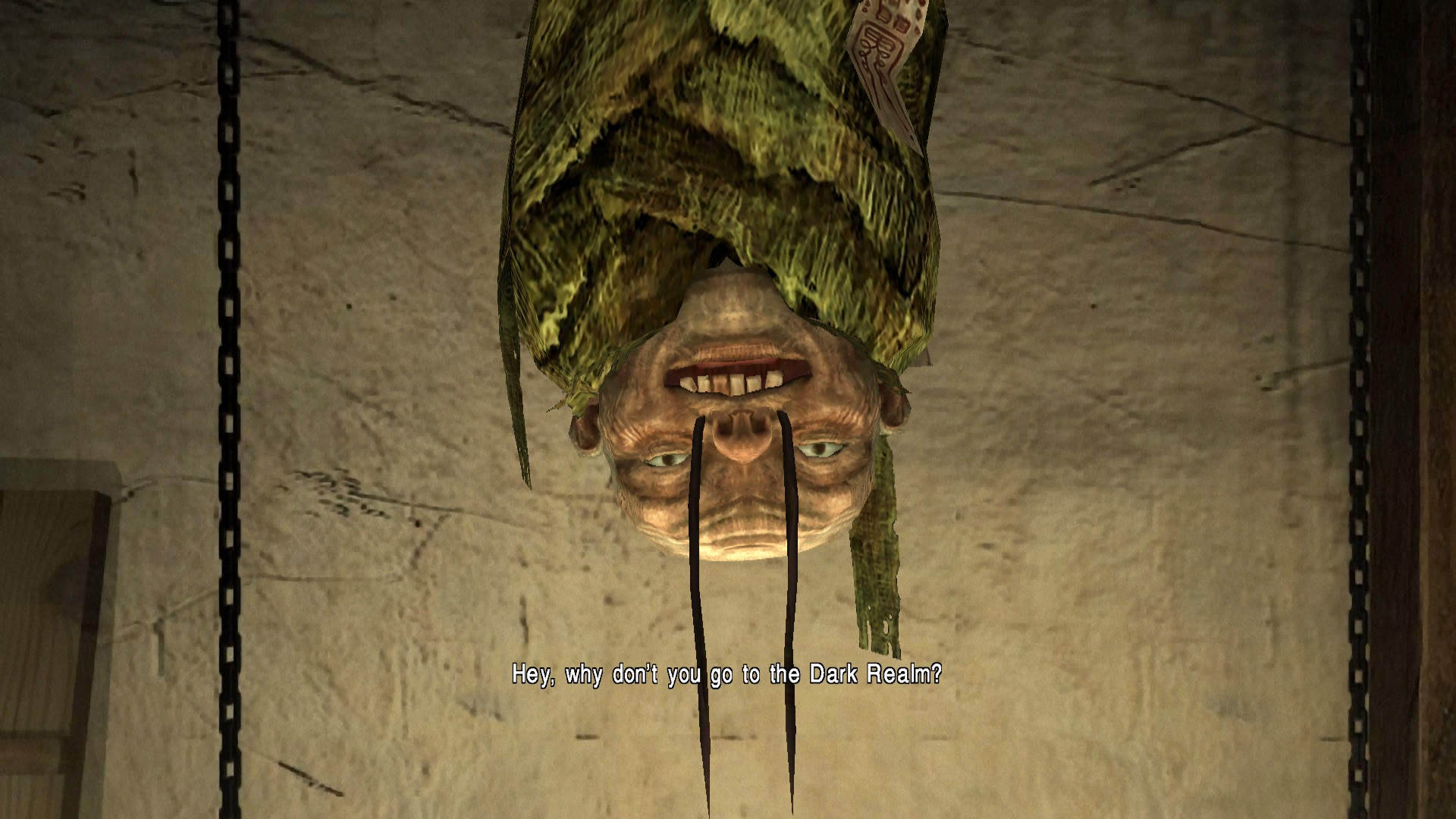
Despite all the good to be found in Onimusha: Warlords’ design, there is a single fatal flaw that mitigates all its successes; a serious lack of content. The game is criminally short, clocking in at under three hours for a blind, casual playthrough with all upgrades unlocked and full completion of the optional challenge area. If you remember the route on your second playthrough, it can be done in under two hours. That’s if you even want a second run; re-playability is severely hampered by a shallow, arbitrary upgrade system that basically completes itself with time to spare, and a lack of optional side content.
This brevity ruins what potential Onimusha: Warlords’ gameplay systems had. Nothing has any time to develop or to teach and challenge you. Sure, the weapon upgrades are fun, but where’s the personal sense of progression when you’re at max level within an hour of starting the game? That’s not to say there’s nothing to see here. If you enjoyed the game back in 2001, then Onimusha: Warlords is certainly worth an afternoon stroll down memory lane. There’s still charm and nostalgia to be found in the art, the story, and the cheesy voice acting. Ultimately, though, it’s just not worth the asking price for so little game.
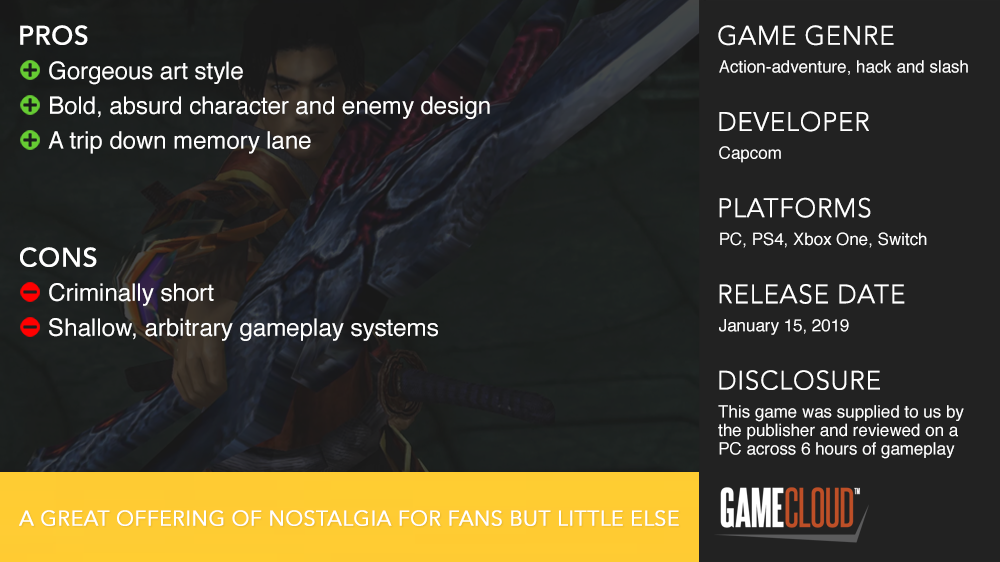
Despite Onimusha: Warlords’ individual elements looking good in isolation, the game amounts to less than the sum of its parts. Its systems aren’t inherently poorly designed, but they fail because they’re given no time to develop and are rendered arbitrary because the game lasts only a few brief hours. If, however, you can brush these concerns aside, as I imagine long-term fans of the series will do, there’s certainly some nostalgic value to be had here. The world and inhabitants of Onimusha: Warlords are as charming as they were on the PS2, and those who grew up on the game will surely enjoy revisiting Inabayama Castle after so many years. The one hope to hold on to is that this sells well enough to warrant a remaster of the significantly improved (and longer) Onimusha 2: Samurai’s Destiny.











